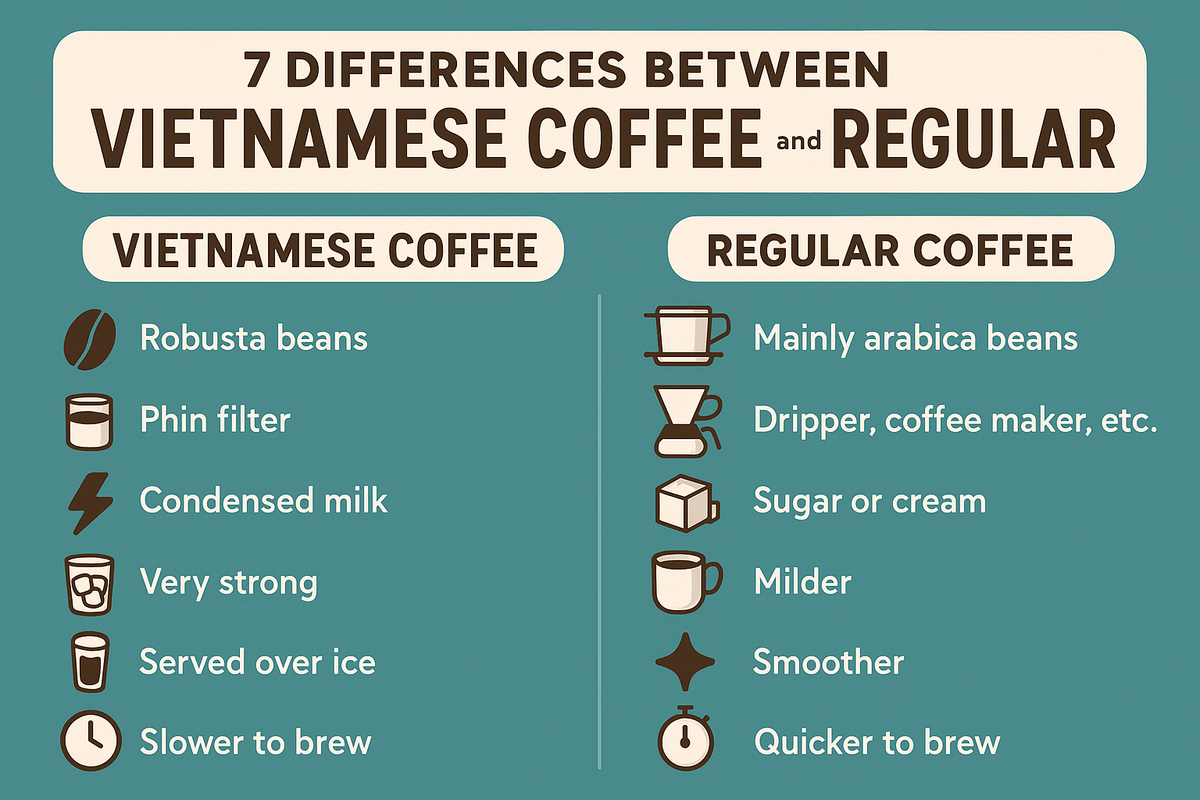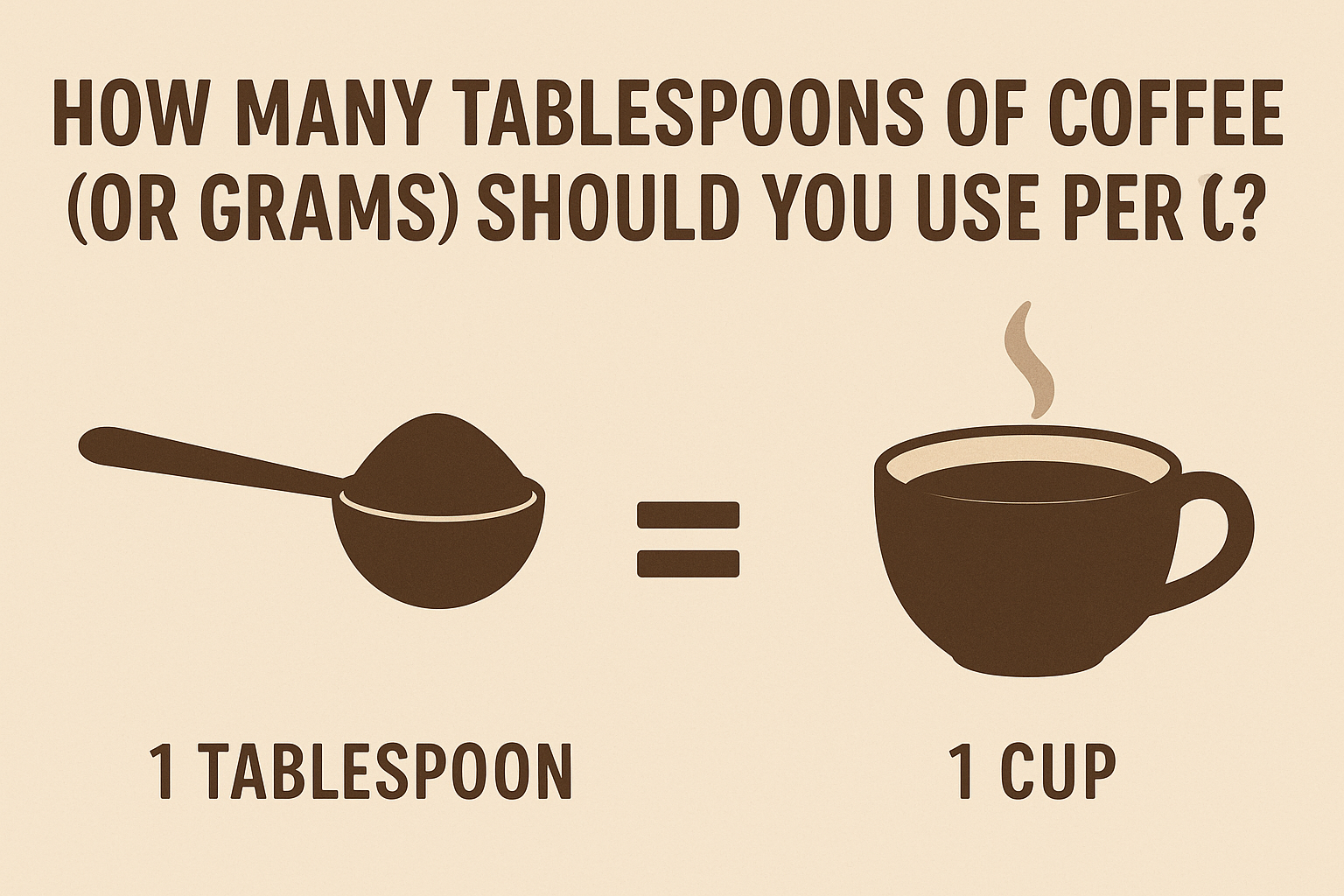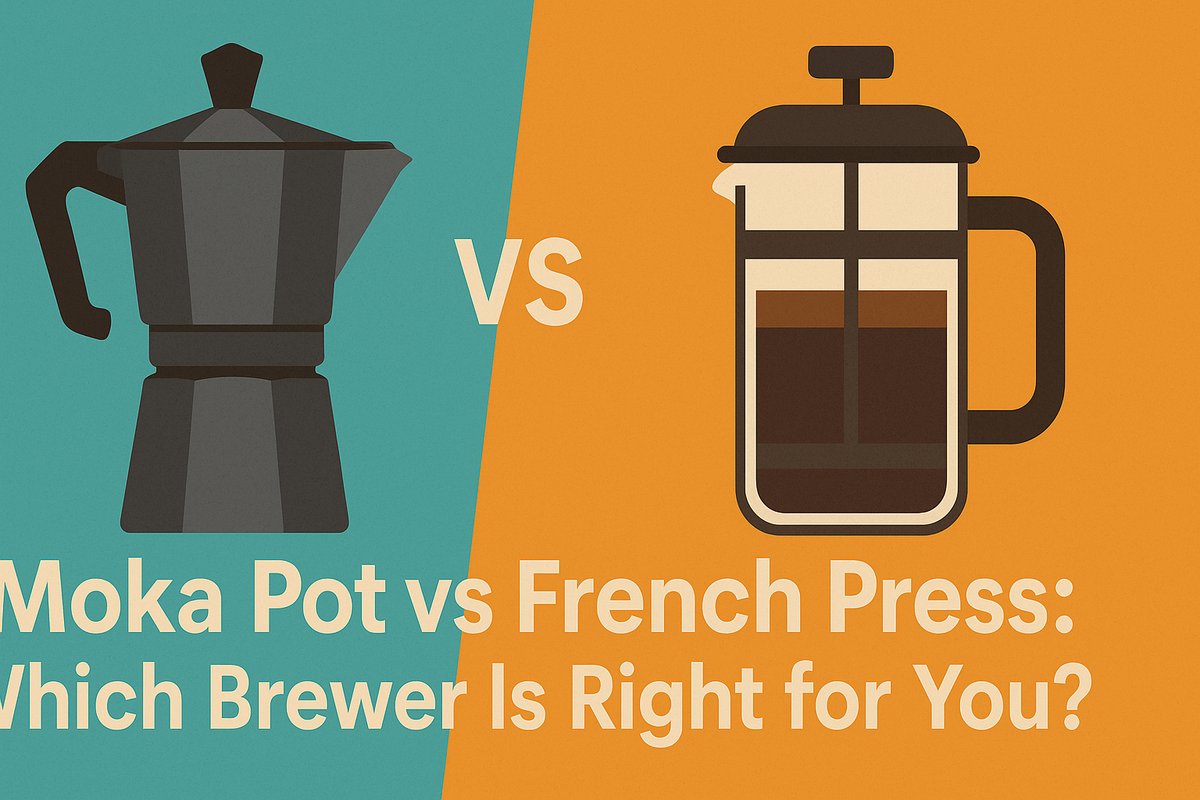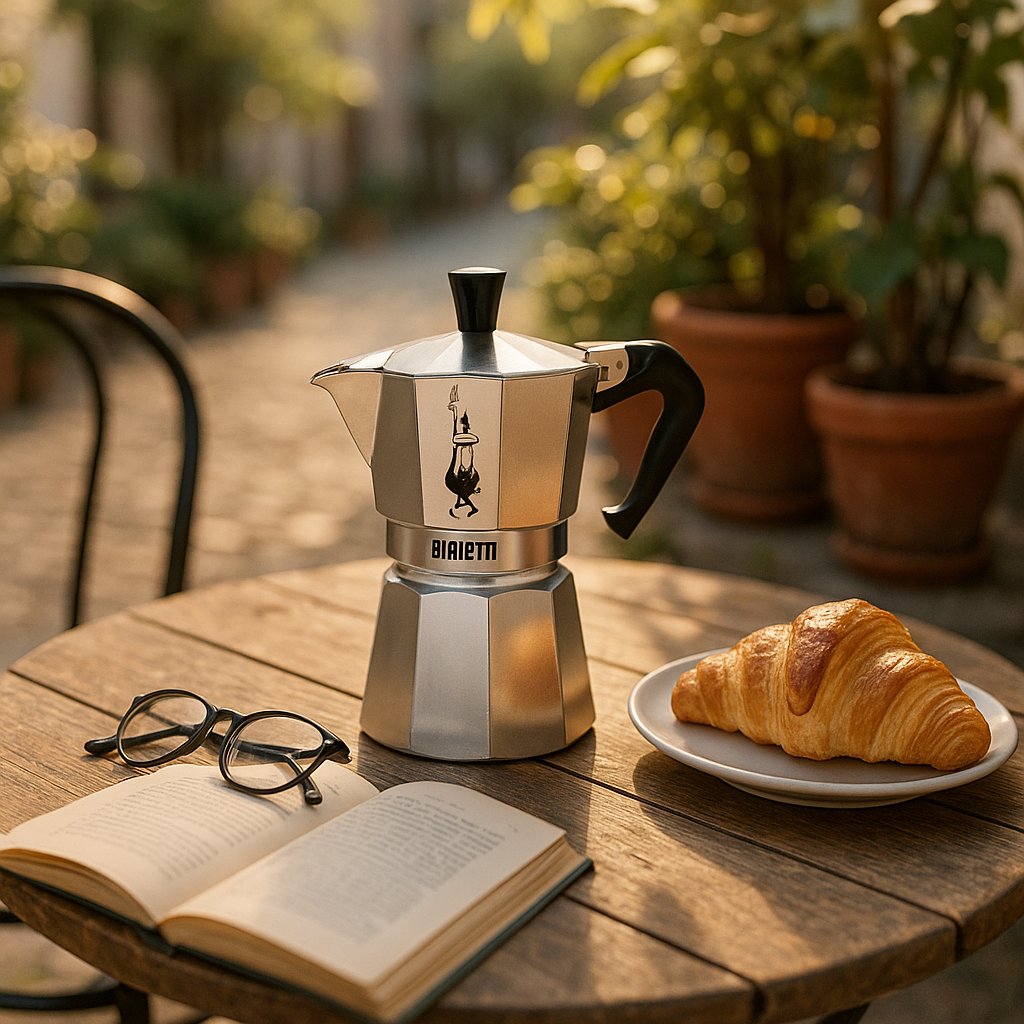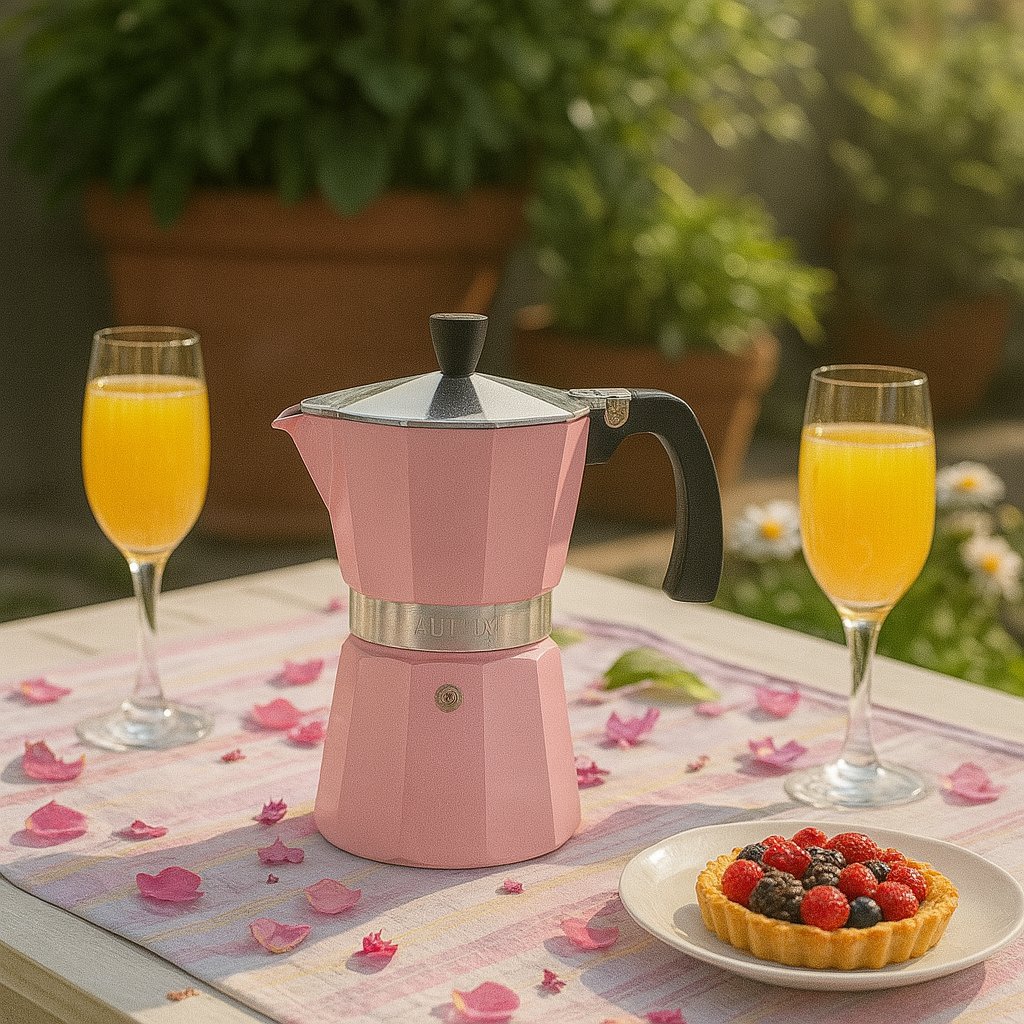3 Ways to Brew Vietnamese Coffee Without a Vietnamese Phin Filter
Discover three alternative methods to brew authentic Vietnamese coffee without traditional phin filters. From French Press to Pour Over, learn techniques that capture the rich, bold flavors of Vietnamese coffee culture.
Marco Rodriguez
Global Coffee Expert & Vietnamese Coffee Specialist
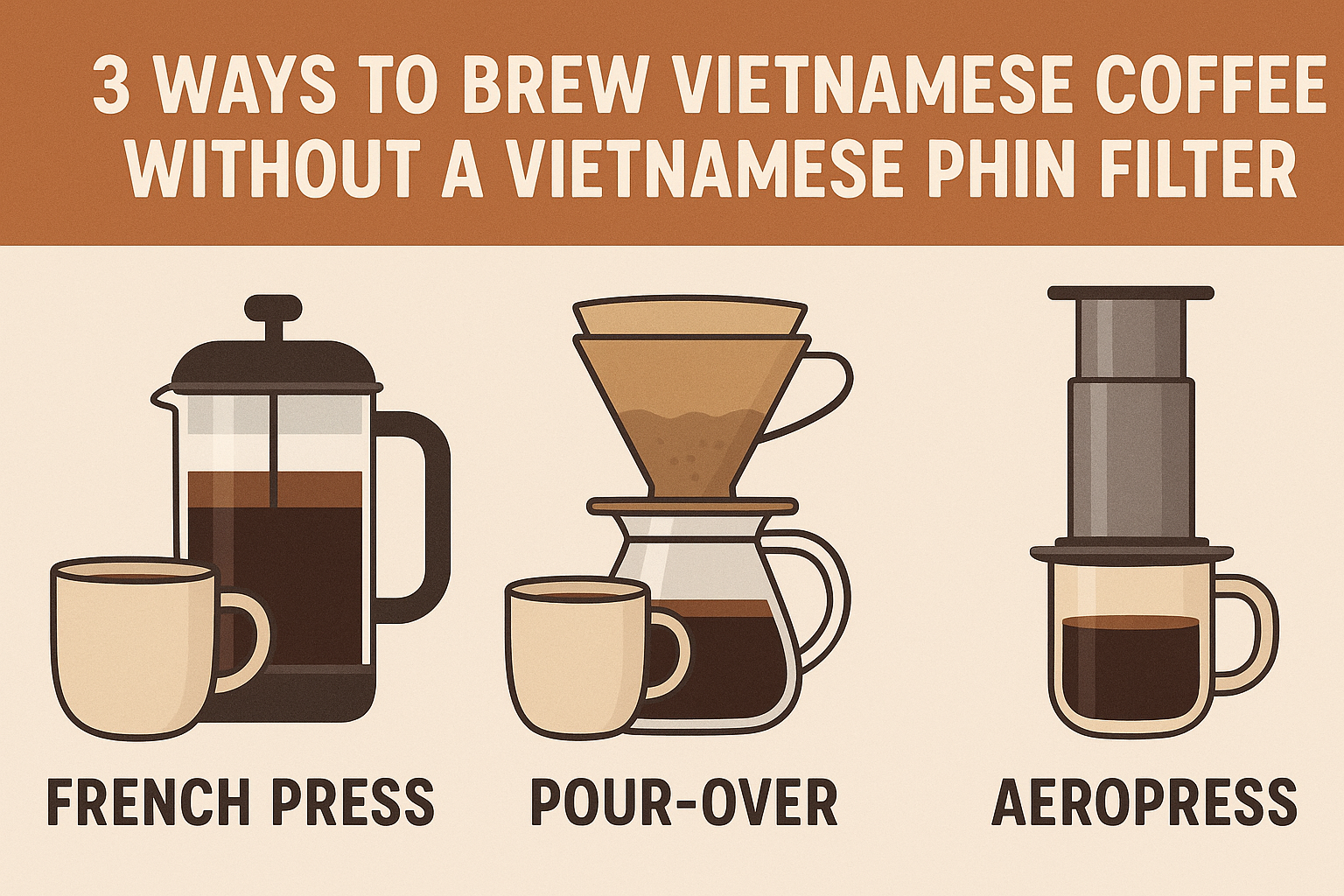
My first encounter with Vietnamese coffee happened in a tiny alley café in Hanoi's Old Quarter, where the morning mist mixed with the intoxicating aroma of dark-roasted robusta beans. The elderly barista, Mr. Duc, watched me struggle with a traditional phin filter for twenty minutes before chuckling and saying, "Young man, good coffee isn't trapped by tools—it lives in the technique." That wisdom has guided my coffee journey across three continents and countless brewing experiments.
Today, as I sit in my Berlin kitchen, surrounded by brewing equipment from my travels—a Seattle-sourced pour-over cone, an Italian moka pot, and yes, that weathered phin filter from Hanoi—I want to share three proven methods to brew authentic Vietnamese coffee without relying on traditional equipment. These techniques honor the soul of Vietnamese coffee culture while adapting to modern kitchens and brewing preferences.
The Essential Methods: Quick Overview
- French Press: Full immersion method that preserves oils and creates rich body
- Pour Over: Precise control method that highlights unique flavor characteristics
- Moka Pot: Pressure-driven method that creates concentrated, intense coffee
Understanding Vietnamese Coffee Culture
Before diving into brewing methods, it's essential to understand what makes Vietnamese coffee unique. During my months in Vietnam's Central Highlands, I learned that Vietnamese coffee culture centers around three fundamental elements: patience, community, and the marriage of bitter and sweet.
Traditional Vietnamese coffee uses robusta beans—harder, more bitter, and containing nearly double the caffeine of arabica. The slow drip method of the phin filter allows for a strong, concentrated brew that pairs perfectly with sweetened condensed milk. But here's what I discovered: the magic isn't in the phin itself, but in the principles it represents.
Key Principles of Vietnamese Coffee
- Slow Extraction: The brewing process should be deliberate and unhurried
- Strong Concentration: The final brew should be bold and full-bodied
- Perfect Balance: Bitterness balanced with sweetness through condensed milk
- Temperature Control: Hot brewing with the option to serve over ice
Method 1: French Press - The Full Immersion Approach
The French Press became my go-to alternative after a memorable morning in a Berlin café when their Vietnamese equipment broke down. The full immersion method closely mimics the phin filter's slow extraction, creating a rich, oil-laden brew that captures the essence of traditional Vietnamese coffee.
Why French Press Works for Vietnamese Coffee
Unlike pour-over methods, the French Press allows coffee grounds to steep in hot water for an extended period, similar to how a phin filter works. This extended contact time extracts maximum flavor from robusta beans while preserving the natural oils that give Vietnamese coffee its distinctive body.
Equipment and Ingredients:
- French Press (8-12 cup capacity recommended)
- Vietnamese robusta coffee beans (medium-coarse grind)
- Water heated to 195-205°F (90-96°C)
- Sweetened condensed milk (Longevity or similar brand)
- Digital scale for precision
- Timer
- Wooden stirring spoon
Step-by-Step French Press Method:
- Measure and Grind: Use a 1:10 ratio—30g of coffee to 300ml of water. Grind to medium-coarse consistency, similar to sea salt. Vietnamese coffee should be stronger than typical French Press coffee.
- Preheat: Rinse the French Press with hot water to warm the glass and prevent temperature shock.
- Add Coffee: Place ground coffee in the bottom of the French Press.
- Bloom: Pour just enough hot water to saturate the grounds (about 60ml). Let bloom for 45 seconds—you'll notice the coffee "puff up" as CO2 escapes.
- First Pour: Add half the remaining water in a steady, circular motion.
- Stir: Give it a gentle stir with a wooden spoon to ensure even extraction.
- Second Pour: Add the remaining water, place the lid on top, but don't press down yet.
- Steep: Let steep for 4-5 minutes (longer than typical French Press for stronger extraction).
- Press: Slowly press the plunger down with steady, even pressure.
- Serve: Pour into a glass with 1-2 tablespoons of sweetened condensed milk.
Marco's Pro Tip:
I learned this trick from a coffee shop owner in Ho Chi Minh City: add a pinch of salt to your coffee grounds before brewing. It reduces bitterness and enhances the natural flavors of robusta beans. Use just a tiny pinch—about 1/8 teaspoon for 30g of coffee.
Method 2: Pour Over - The Precision Method
My transition to pour-over Vietnamese coffee happened in Seattle, at a specialty coffee shop run by a Vietnamese-American barista named Linh. She showed me how precise control over water flow and timing could replicate the slow, methodical drip of a phin filter while highlighting the unique characteristics of different Vietnamese coffee regions.
The Science Behind Pour Over Vietnamese Coffee
Pour-over brewing allows for precise control over extraction variables: water temperature, flow rate, and contact time. This method works particularly well with single-origin Vietnamese robusta, as it can highlight the terroir differences between beans from Đắk Lắk province versus those from Gia Lai province.
Equipment Needed:
- Pour-over dripper (V60, Chemex, or Kalita Wave)
- Paper filters (specific to your dripper)
- Vietnamese robusta coffee (medium-fine grind)
- Gooseneck kettle for controlled pouring
- Digital scale with timer function
- Burr grinder (for fresh grinding)
- Thermometer
Pour Over Brewing Technique:
- Setup: Place filter in dripper and rinse with hot water. This removes papery taste and preheats the equipment.
- Measure: Use 22g coffee to 300ml water (1:13.6 ratio) for Vietnamese-strength coffee.
- Grind: Grind to medium-fine, slightly finer than table salt but coarser than espresso.
- Create Well: Place coffee in filter and create a small well in the center with your finger.
- Bloom Phase: Start timer and pour 50ml of 200°F water in spiral motion. Watch the coffee "bloom" for 45 seconds.
- First Pour: At 0:45, pour water in slow spiral from center outward to 150g total (about 1:30 mark).
- Second Pour: At 1:30, pour to 250g total weight (about 2:15 mark).
- Final Pour: At 2:15, pour remaining water to 300g total.
- Wait: Let coffee finish dripping. Total brew time should be 4-4:30 minutes.
- Serve: Mix with condensed milk and enjoy hot or over ice.
Regional Flavor Notes:
Pour-over brewing reveals subtle differences in Vietnamese coffee regions. Đắk Lắk beans often show chocolate and nutty notes, while Gia Lai beans tend toward earthier, more robust flavors. The clean extraction of pour-over lets these characteristics shine through the bold robusta base.
Method 3: Moka Pot - The Pressure-Driven Solution
The third method came to me during a revelation in Rome, where I observed how Italian moka pot brewing shared surprising similarities with Vietnamese coffee philosophy. Both cultures appreciate strong, concentrated coffee that serves as a social ritual rather than just a caffeinated beverage.
Why Moka Pot Works for Vietnamese Coffee
The moka pot uses steam pressure to push hot water through coffee grounds, creating a concentrated brew similar to Vietnamese coffee's intensity. The resulting coffee has the body and strength that pairs perfectly with sweetened condensed milk, while the relatively quick brewing time makes it practical for daily use.
Equipment Required:
- 6-cup aluminum moka pot (optimal size for Vietnamese coffee strength)
- Vietnamese robusta coffee (medium-fine grind)
- Filtered water
- Gas or electric stove
- Wooden spoon for stirring
- Small pitcher for milk preparation
Moka Pot Vietnamese Coffee Method:
- Fill Water Chamber: Fill bottom chamber with filtered water up to the safety valve level.
- Grind Coffee: Grind 20-22g Vietnamese robusta to medium-fine consistency.
- Fill Basket: Fill the metal basket with ground coffee, level but don't tamp down.
- Assemble: Screw top and bottom chambers together firmly but not overly tight.
- Heat: Place on medium-low heat. High heat can over-extract and create bitter flavors.
- Listen: When you hear gurgling sounds, coffee is ready. Remove from heat immediately.
- Cool Down: Run the bottom chamber under cool water to stop extraction.
- Dilute (Optional): For traditional Vietnamese strength, add 1-2 tablespoons hot water per cup.
- Serve: Pour over sweetened condensed milk in a 1:1 ratio.
Temperature Control Secret:
The key to perfect moka pot Vietnamese coffee is temperature control. I learned this from an Italian engineer in Milan: preheat your water in a kettle to 160°F before adding to the moka pot. This prevents over-extraction and creates a smoother, less bitter cup that better mimics traditional phin filter coffee.
Mastering the Condensed Milk Component
No Vietnamese coffee is complete without understanding the condensed milk component. During my time in Vietnam, I learned that the relationship between coffee and condensed milk is an art form that balances sweetness, texture, and temperature.
Choosing the Right Condensed Milk
Not all condensed milk is created equal. Vietnamese coffee shops typically use Longevity Brand (Sữa Ông Thọ) or similar Asian brands that have a richer, less sweet profile than Western varieties. The consistency should be thick enough to create distinct layers before mixing.
Ratios and Techniques:
- Traditional Ratio: 1:1 coffee to condensed milk for strong, sweet flavor
- Modern Ratio: 2:1 coffee to condensed milk for less sweetness
- Light Version: 3:1 coffee to condensed milk for subtle sweetness
- Iced Version: Use same ratios but serve over ice cubes
Troubleshooting Common Issues
Problem: Coffee tastes too bitter
Causes: Over-extraction, water too hot, grind too fine
Solutions: Reduce brewing time, lower water temperature to 195°F, use coarser grind, add pinch of salt
Problem: Coffee is too weak
Causes: Under-extraction, not enough coffee, grind too coarse
Solutions: Increase coffee amount, use finer grind, extend brewing time, ensure proper bloom
Problem: Inconsistent results
Causes: Variable measurements, temperature fluctuations
Solutions: Use digital scale, maintain consistent grind, keep water temperature steady, time your brews
Problem: Condensed milk won't mix
Causes: Cold coffee, thick condensed milk
Solutions: Ensure coffee is hot, warm condensed milk slightly, stir with proper technique
Conclusion: Embracing the Spirit of Vietnamese Coffee
As I conclude this guide from my kitchen in Berlin, with the aroma of Vietnamese robusta filling the air and three different brewing devices on my counter, I'm reminded of Mr. Duc's words from that Hanoi alley: "Good coffee isn't trapped by tools—it lives in the technique."
Whether you choose the French Press for its accessibility, the Pour Over for its precision, or the Moka Pot for its intensity, remember that you're participating in a coffee tradition that spans generations and continents. Each method offers a unique pathway to the same destination: a rich, satisfying cup that bridges Vietnamese tradition with modern convenience.
Your Vietnamese Coffee Journey Starts Now
Choose one method that resonates with you and practice it consistently for a week. Pay attention to how small adjustments in grind size, water temperature, and timing affect the final cup. Most importantly, slow down and savor the process—Vietnamese coffee is as much about the journey as the destination.
Remember my mantra from three continents of coffee exploration: "The world's finest coffee isn't found in the most expensive cafés—it's brewed with love, patience, and understanding in your own kitchen, where every cup connects you to a global community of coffee lovers who share your passion for this remarkable beverage."
Chúc bạn uống cà phê ngon! (Wishing you delicious coffee!)
